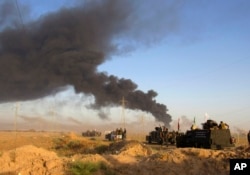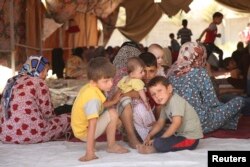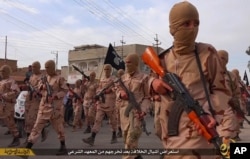Iraqi and Kurdish forces moving on Mosul are bracing for heavier resistance as they advance toward the Islamic State's last major stronghold in Iraq. Yet even as confidence in the operation grows, there are fears the most treacherous terrain may lie outside the city itself.
Far from pits filled with oil, an assortment of bombs and other of IEDs (improvised explosive devices), or even cadres of IS fighters willing to battle to the death, the greatest danger may be a desire for vengeance and competing sectarian claims to cities and towns on Mosul's periphery.
Even without actual violence, it could be enough to destroy the agreements and alliances currently holding Iraq's various anti-Islamic State forces together.
"There are flashpoints everywhere," said Michael Pregent, a former intelligence officer now with the Hudson Institute.
"You win a battle, and you say you won the war," he warned from Iraq, characterizing much of the initial success as nothing more than "temporary victories."
Pregent and others caution that many of the towns taken in the early stages of the Mosul operation, to the south and east of the city, have been depopulated. And even before the populations left, many of them were predominantly Sunni.
As a result, many of Iraq's Shia militias, known as Popular Mobilization Forces (PMFs) have so far held back.
But to the west, all that changes.
Tal Afar
"There is Tal Afar," warned Amnesty International's Donatella Rovera. "Tal Afar is a very different game."
Tal Afar fell to Islamic State during the terror group's surge across Iraq's Ninewa Province in June 2014. Many of the city's 150,000 to 200,000 ethnic Turkmen residents fled, including a vast majority of Shia, fearful of the wrath of IS and the hardline Sunni Turkmen who stayed.
Now, some of the Shia militias have their sights set on taking the city from IS — and the group's Sunni sympathizers.
"The Shia Turkmen militias and others, that's their territory as far as they're concerned," Rovera said.
Drawing lines
Iraqi Prime Minister Haider al-Abadi and other top Iraqi officials have repeatedly given assurances that the PMF will not cross into Mosul itself.
But outside of Mosul the lines are blurry, with both Iraqi and U.S. military officials admitting the PMF will play a role.
"As far as what the Shia PMF's role is, that's up to government of Iraq," U.S. Army Maj. Gen. Gary Volesky, commander of the land component for Operation Inherent Resolve, told Pentagon reporters during a video briefing Wednesday from Baghdad.
When pressed on whether that could include a PMF role in Tal Afar specifically, Volesky demurred.
"I'm not going to comment on Tal Afar because today we are focused on Mosul,” he said.
In contrast, PMF leaders have not been shy about sharing their intentions.
"Our sector of operations is the western axis of operations, part of which will certainly be in the direction of Tal Afar," PMF operational commander Abu Mahdi al-Muhandis said during a news conference Tuesday in An Najaf, Iraq. "The operations are proceeding."
Shia reality
Analysts like Patrick Martin at the Washington-based Institute for the Study of War have no doubt Shia PMF leaders will make good on their word to move on Tal Afar, and that the impact could be far-reaching.
"The Popular Mobilization has listed it very prominently as one of the targets for their operations," Martin said. "That has a large potential for sectarian violence."
There are also fears that there may be little the Iraqi government, or anyone else, can do to rein in the PMF. Many of its members take orders from neighboring Iran and have been accused by humanitarian groups of committing war crimes on Sunni civilians elsewhere.
One U.S. official speaking to VOA on condition of anonymity prior to the start of the Mosul operation conceded the prominent role of the Iranian-backed Shia militias "is a reality" of how Iraq works.
"The Shia militias are still leading the way, particularly the Iranian-led organizations," said Phillip Smyth, a University of Maryland researcher who specializes in Shia militia activity.
"I worry about the aftereffects of that and who's really going to be running Iraq," he said.













